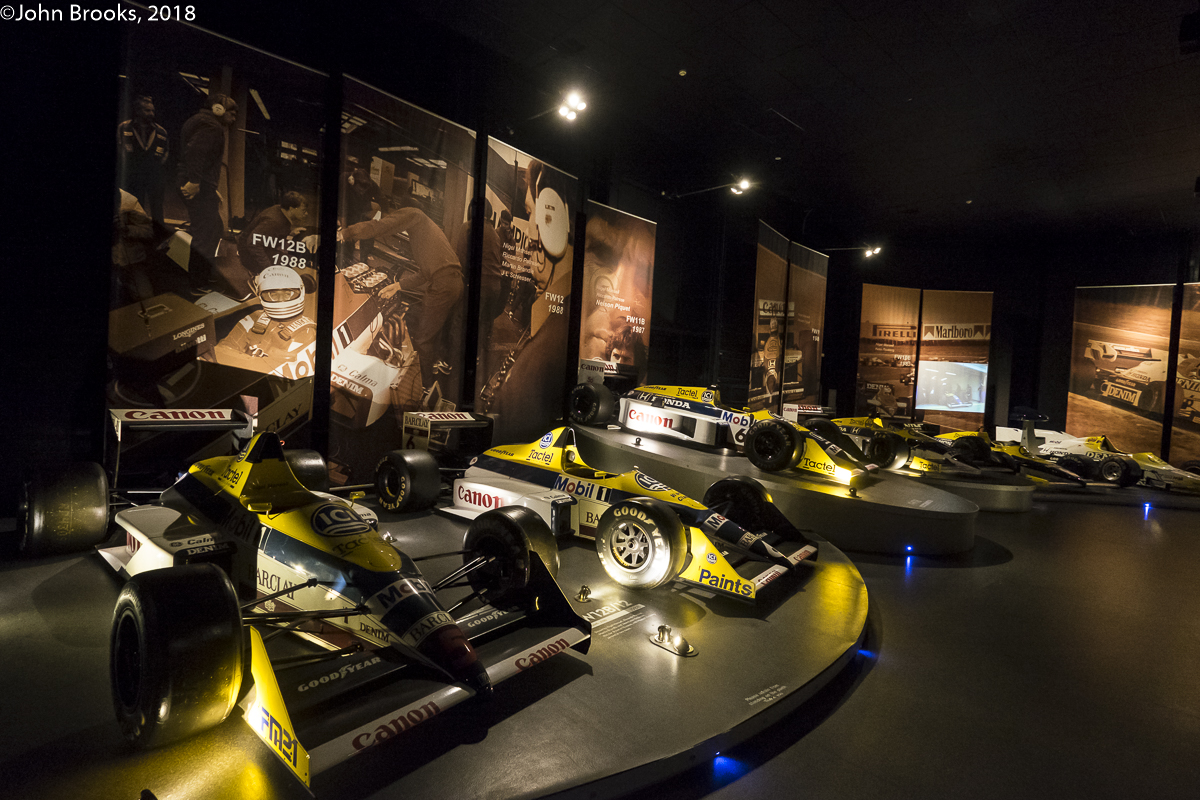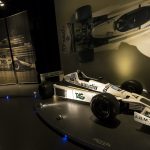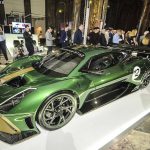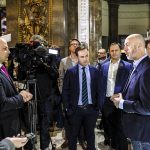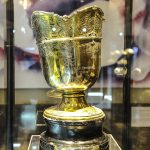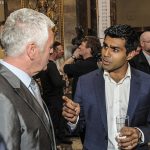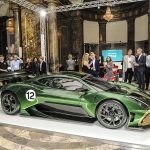
Twenty years ago this week I jumped on a plane and headed for Florida, destination Daytona International Speedway, It was the first phase in what I now laughingly refer to as a career in motorsport. Since the early ’80s I had combined a real paying job with the weekend vice of shooting races as a member of the media. I had witnessed the final stages of Ayrton Senna’s pre-F1 career, watched with awe as Group C flowered and was eventually destroyed by dark forces and followed the re-birth of endurance racing in the ’90s. I was hooked.

Now it was time to leave behind the comfortable existence of a monthly salary, an chunky bonus most years, and a new BMW 7 or 8 series every four to six months. I was going to be a full time motorsport photographer following in the footsteps of those guys I knew in F1 who had made it to the Majors. They were doing very well, better than me or so they would have you believe. What they did not tell me was the the bit about the pain and penury, the uncertainty of where the next job or cheque would come from and the sheer grind of endless travelling for a living. All this while trying to keep clients, a bank manager, and the wife, happy.

No matter, I was gung-ho on my way to Daytona. My flight and a fee were being paid for by the charming Laurence Pearce of Lister Cars fame, it was always going to be like this I told myself…………roaming the planet on someone else’s dollar, creating art………Terry Donovan eat your heart out………..
I had shot in the USA the previous year when following the FIA GT circus to Sebring and Laguna Seca, now I was about to find out how things were really done in America.

The 1998 Rolex 24 was a race run in a time of great upheaval and transition, both on and off the track. On a broader scale the world was shifting on its axis from analogue to digital, the new-fangled internet and email was here to stay, and old farts like me would have to get used to it, embrace it even, Dot-Com was the buzz word on everyone’s lips. A new century beckoned and a totally unjustified optimism was all around, as if we had all bought into Donald Fagan’s vision:
A just machine to make big decisions,
Programmed by fellows with compassion and vision,
We’ll be clean when their work is done,
We’ll be eternally free, yes, and eternally young
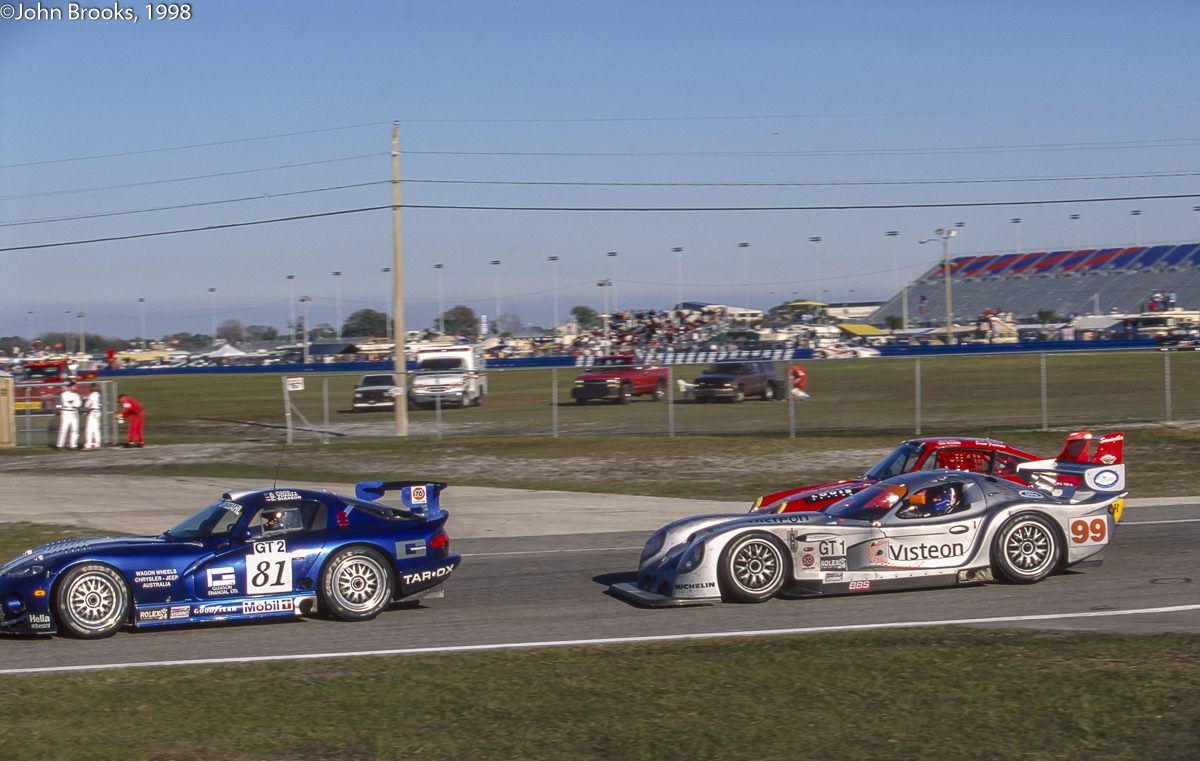
On the tracks the world was also going through a revolution, especially in the rarefied arena of endurance racing in North America. In the post-Andy Evans era, Daytona in 1998 was the first battleground in the looming conflict between the traditional powers, aka the France family, and the new broom, Don Panoz, controller of three tracks, and his plans for sportscar racing in North America that would evolve into the American Le Mans Series. We all know how that turned out in the end.

For a foot-soldier such as I this all seemed remote, all I could see was the beautiful Florida sunshine, a real contrast to the grey, soggy conditions back home. At the track there was the amazing banking, there were also a lot of fences and gates to negotiate and even more security guards to deal with, all dressed in blue, some armed, seemingly with an agenda all of their own.

On track the cars were something of a throwback, the favourites for victory came from the various Ferrari 333 SP teams or the Ford-powered Dyson Racing Riley & Scott MKIII pair. These fine cars would have been nowhere if faced by the top practitioners in Europe, such as the Mercedes-Benz CLK LM or the Toyota GT-One, who were in a different league of performance and, of course, budget.

Indeed from the European scene three Porsche 911 GT1s, a brace of Panoz GTR-1s and a Lister Storm GTL were on the Rolex 24 GT1 entry list creating a problem for the local officials who wished for the top step of the podium to be the property of the prototype class, cunningly renamed CanAm. What relationship these cars had with the Group 7 legends of yesteryear was unclear but it made the PR guys feel warm and everyone pretended that it was absolutely logical.

Another PR canard doing the rounds at the race was the insistence that the 1998 Rolex 24 would be a re-run of the Ford v Ferrari battles of the ’60s, Phil Space and his mates in the old press rooms would have been proud. Like the CanAm non-connection no one was fooled but we were all too polite to mention it.

Perhaps the whole paddock that year would have wanted to see Gianpiero “Momo” Moretti finally achieve a win at Daytona. He had first raced the 24 Hours at the tri-oval in the 1970 edition driving a Ferrari 512S no less. Twenty-eight years and fourteen attempts later he knew that time was against him, but 1998 was as good an opportunity as ever. As Momo put it at the time, “With all the money I have spent at Daytona I could have bought a thousand Rolexes easily, but I wanted to win this race.”

His Ferrari 333 SP was run by the vastly experienced Kevin Doran and he had a stellar line-up with Mauro Baldi, Arie Luyendyk and Didier Theys, it was now or never.

Joining Momo on the grid, though a few rows back was another driver who had raced in the 1970 Daytona 24 Hours, Brian Redman. Back then Redman was a key part of the JW Automotive squad and the 1970 race was eagerly anticipated as it would see the first full contest between the Porsche 917s and Ferrari 512s. Brian achieved the bizarre feat of finishing both first and second in that race as he drove the winning car of Pedro Rodriguez and Leo Kinnunen for a couple of stints while waiting for his own 917 to have its clutch replaced. The Finn was placed on the naughty step for ignoring team orders to slow down while enjoying a huge lead, his punishment was to witness Redman pounding round in his car.
In 1998 Redman joined 1990 Le Mans winner, Price Cobb, in a Porsche 993 Carrera RSR but there would be no fairytale for the veteran Brit, a broken gearbox on Saturday brought his career in 24-hour races to an end.

Opposition in CanAm Ferrari ranks came principally from the Scandia Engineering example crewed by Yannick Dalmas, Bob Wollek Max Papis and Ron Fellows. Dalmas took pole with a 1:39.195 lap, just shy of 130 mph average speed, this was a serious effort at winning outright.

Doyle-Risi Racing had left their 1996 Daytona-winning Oldsmobile-powered Riley & Scott behind in favour of a 333 SP, backing up Wayne Taylor behind the wheel were Fermin Velez and Eric van de Poele, another serious candidate for overall victory.

There were arguably five serious Riley & Scott contenders, all Ford powered. Two from Rob Dyson’s crack outfit based at Poughkeepsie. #16 for James Weaver, Elliot Forbes-Robinson and Dorsey Schroeder as well as the Guv’nor, seen here at the wheel.

In #20 Rob was joined by Butch Leitzinger, John Paul Jr., and Perry McCarthy. Rob was keen to repeat his Daytona triumph of the previous year, his cars were always in contention down in Florida, in 1998 they started from 4th and 5th places.
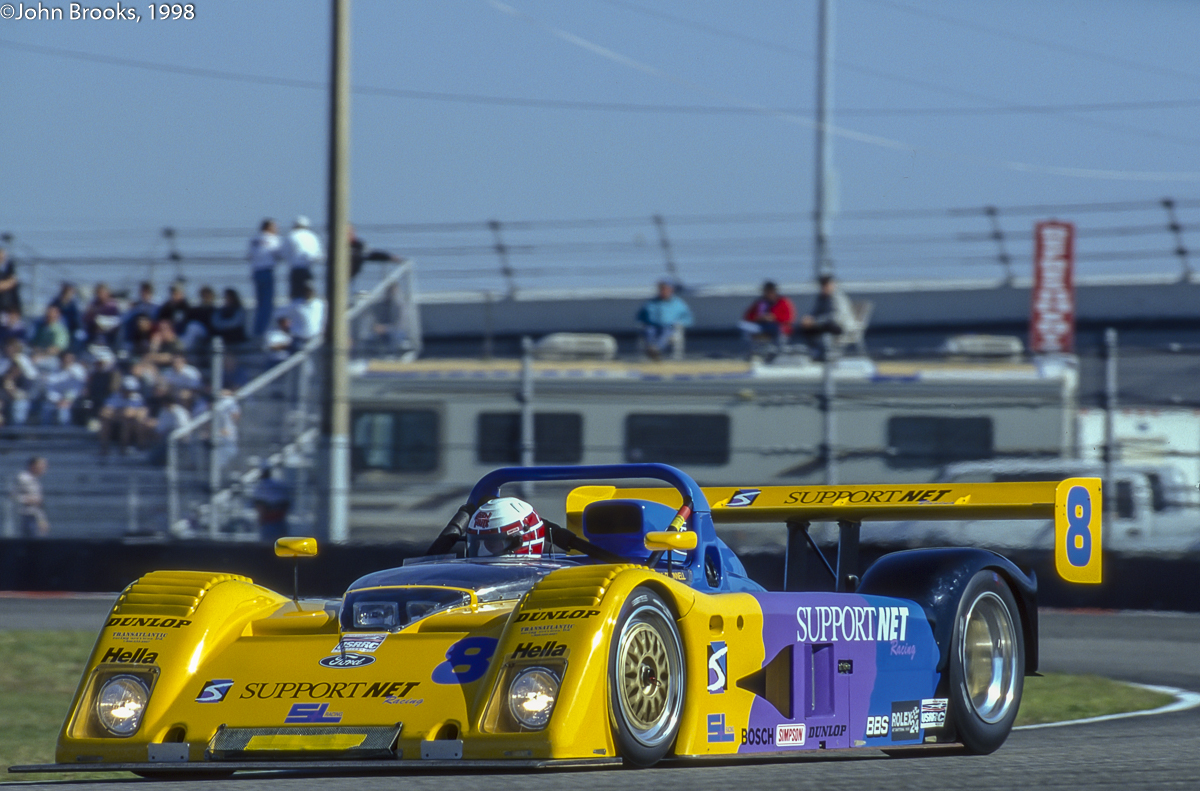
Henry Camferdam enlisted Scott Schubot and Johnny O’Connell in his R & S MKIII, they started at a respectable sixth spot.

Michael Colucci ran a pair of Rileys in association with turkey-magnate Jim Matthews. Matthews was partnered in #39 by the ‘dream team’ of multiple champions Derek Bell and Hurley Haywood, plus David Murry.

#36 had Eliseo Salazar, Jim Pace and Barry Waddell on driving duty with Matthews hedging his bets as an entry in both cars.
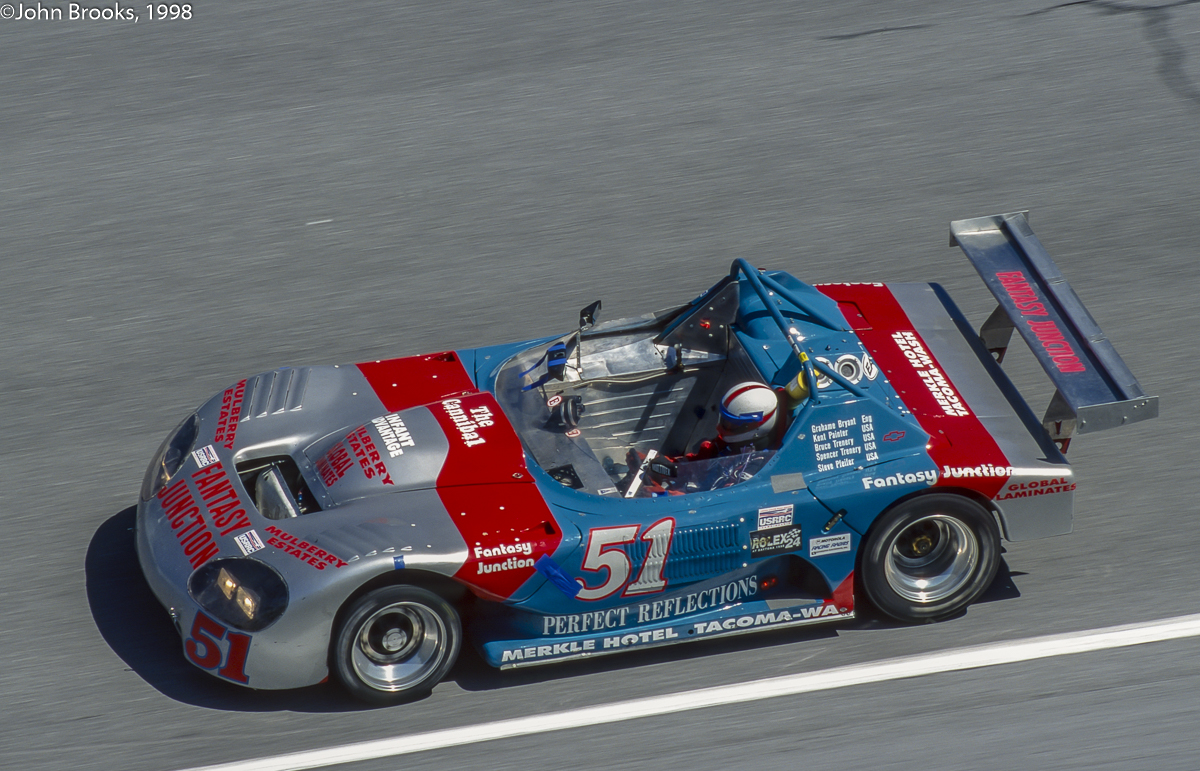
Back at the turn of the century some frankly weird contraptions would show up and ‘race’ at Daytona during the 24 Hours. This pioneering spirit was very much in the ‘run what you brung’ tradition and is somewhat missed in these politically and corporately correct times. In 1998 the Chevrolet Cannibal was oddball of the year, in fact there are grounds for thinking that it would be oddball of any year.
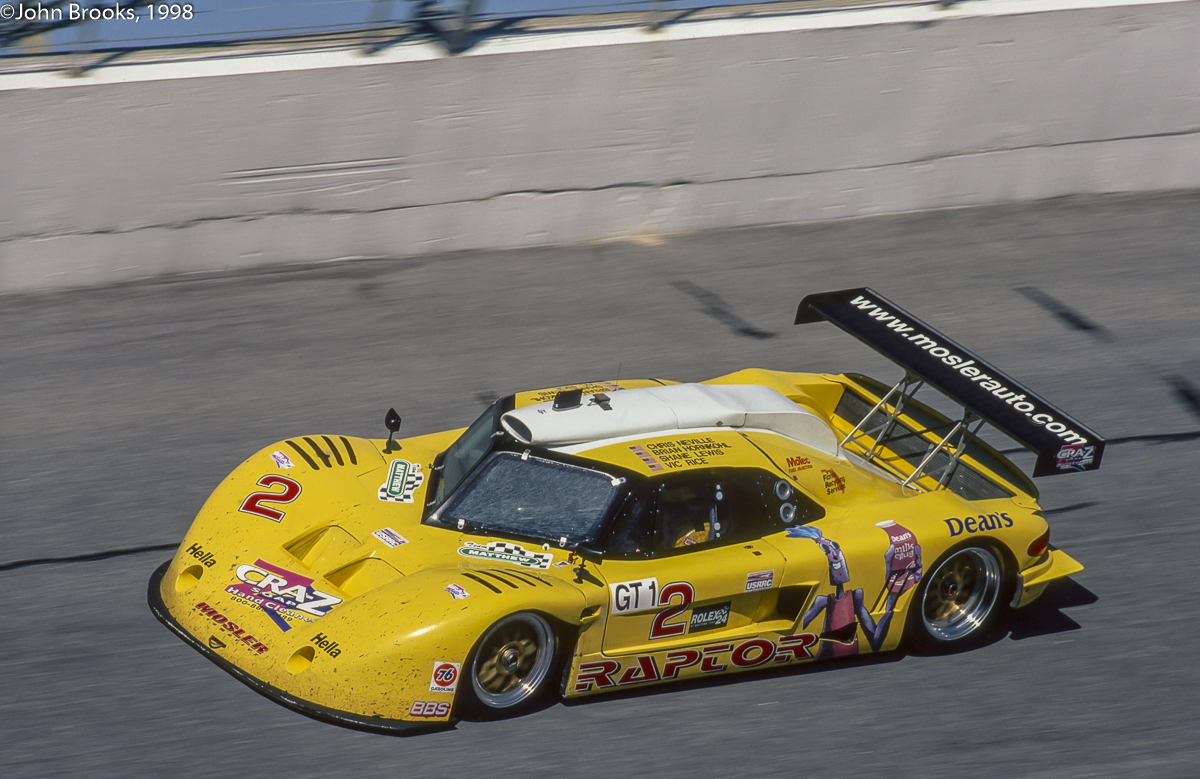
1998 also saw the Mosler Raptor take to the tracks, designed it would appear by Captain Nemo, with the distinctive split screen. At home at Turn Three or 20,000 leagues under the sea…………….

Other left field entries would include the Keiler KII which was a development of a Chevron B71. Powered by the ubiquitous Ford V8 it was a good example of the can-do engineering spirit that ran through the North American racing scene in the last decade of the century.

As mentioned earlier the GT1 class should have provided stiff opposition to the leading prototypes. However the powers that be decided that a CanAm car would triumph, so the regulations were changed, not for the first, or the last, time in Volusia County. The Panoz pair with an all-star line up of Eric Bernard, David Brabham and Jamie Davies in #99 and Andy Wallace, Scott Pruett, Doc Bundy with 1987 World Champion, Raul Boesel, in #5 should have been rattling the Ferraris and the Dyson squad in the speed stakes. However………….

The Porsche 911 GT1 trio should also have been there or there about, but USRRC, no doubt under instructions from above, had other ideas. Ballast was added and there were smaller restrictors if the GT1 had carbon brakes or electronic engine management – hello the computer age! – the final cut was reducing the fuel tank size from 100 to 80 litres to match the Can-Am cars. It was all a bit farcical and it fuelled the rivalry between Panoz and what was to become GrandAm. The ‘not invented here’ attitude was alive and flourishing.
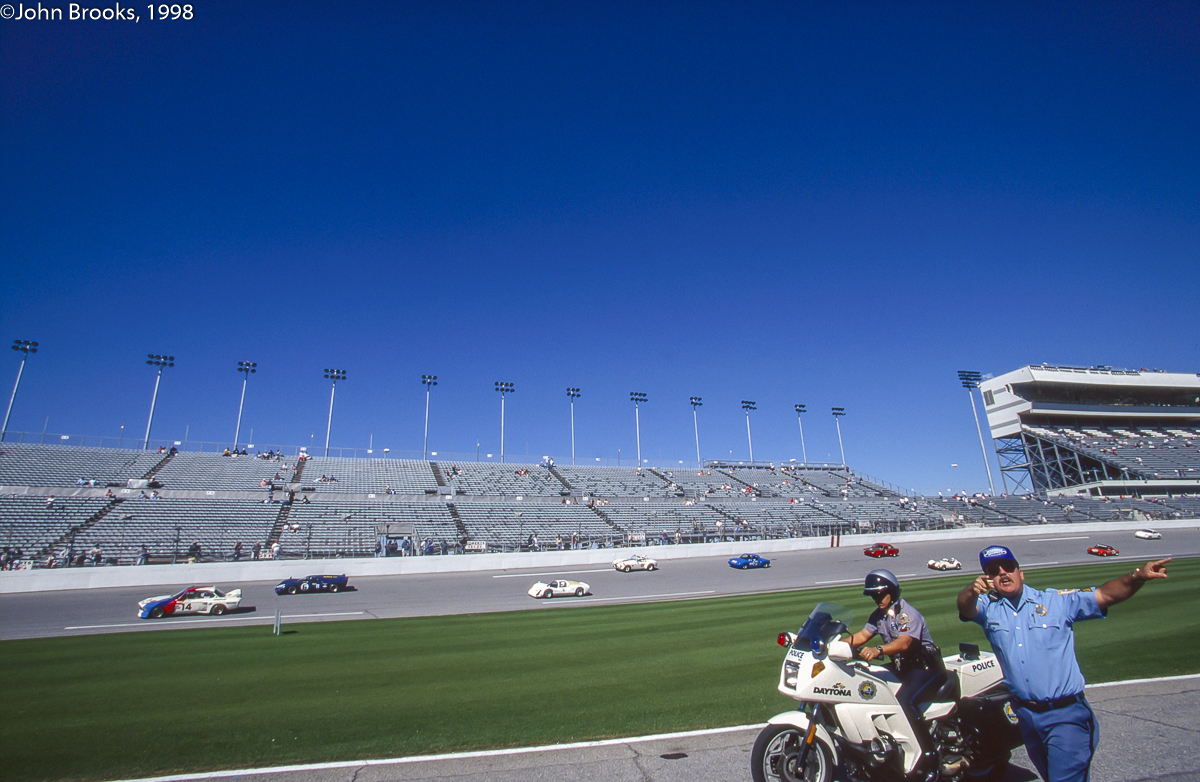
There was the usual pre-race ballyhoo, speeches, songs, prayers and parades. Former heroes rumbled round the track at a dignified pace, provoking this cop to bellow incomprehensible instructions to move which were largely drowned out by the engine noises, this despite being in a place that was allowed by our passes……….my way or the highway…………..it was easier to leave than try and argue.

A full grid of 74 cars took the start under blue skies. As I have learned with 24-hour races, and the Rolex in particular, everyone heads off for the first corner with optimism in their hearts but it does not take long for the cracks to appear in even the best racers. One by one the favourites are hobbled to a greater or lesser degree, Daytona International Speedway has a deserved, and hard earned, reputation for being cruel to the aspirations of racers and their teams, the 1998 Rolex 24 would be no exception to this rule.

The race ran to plan for the leaders till the second hour. A full course caution was spotted by Andy Wallace in the Panoz as he headed into NASCAR four and he lifted off, just as James Weaver’s R & S was following him a full pelt, the resulting collision effectively ended both cars chances though both plugged away after extensive repairs, neither was running at the finish.

Doyle-Risi was next to stumble. First a pit official waved Eric van de Poele out of the pits even though the exit was closed, then the mistake was compounded by neglecting to inform Race Control, a two lap penalty was the consequence. Shortly after night fell the Belgian crashed out at the West Horseshoe, knocking out both himself and the Ferrari from the race.

The lead was taken on by the Scandia Ferrari with the #20 Dyson car giving chase. Around 04.00 on Sunday advantage switched to the latter as the 333 SP suffered first a sticking throttle, then the transmission caught fire, another leading contender was out.

This left Dyson on target for a successive victory but the Racing Gods had other ideas. The engine started to give concern and with about three hours to go matters came to a head with the car being forced into the pits while smoking and leaking fluids………..another dream dashed.

While Dyson were suffering despair the Moretti Ferrari was now in a lead that it would not surrender. Momo took the final stint, he had earned that right the hard way.

There were emotional scenes on the podium, a dream had come true, Momo had his Rolex. The Italian veteran would have an Annus Mirabilis in 1998 taking victory at both the 12 Hours of Sebring and the Watkins Glen Six Hours, throw in a finish at Le Mans and it was time to leave the stage.

What of the other places? In spite of the best efforts of the USRRC to slow the GT1 entries they were there at the Chequered Flag, surviving the carnage that had engulfed the Can-Am runners. The Porsche 911 GT1 EVO of Rohr Motorsport finished second some eight laps down on the winner.

This was despite an all-star driver line up, almost an embarrassment of riches: Allan McNish, Jörg Müller, Danny Sullivan, Uwe Alzen and Dirk Müller enjoy the applause but no Rolex watches despite the podium and the class win, still rankles with a Wee Scot or so I am told. Not that any of us ever remind him, oh no sireee…………

Third spot was occupied by another Porsche 911 GT1, the Larbre Compétiton entry of Christophe Bouchut, André Ahrlé, Patrice Goueslard and Carl Rosenblad………….a top class effort, much as we have come to expect from Jack Leconte’s outfit.

Porsche also took GT2 honours with the evergreen Franz Konrad guiding his squadron of gentlemen drivers to victory in the 911 GT2. Toni Seiler, Wido Rössler, Peter Kitchak and Angelo Zadra all did their bit in this fine result.

The final class winners were PTG and their BMW M3. Bill Auberlen, Boris Said, Peter Cunningham and Marc Duez climbed the top step of their podium at ‘The World Center of Racing’ to receive their trophies, no false modesty at DIS.
The eternally youthful Bill will line up for the factory BMW outfit this weekend, as will his fellow class winner from 1998, Dirk Müller. Dirk will be hoping that his Ford overcomes Munich’s finest.

What did I learn from the experience of my first Rolex? Well like most Europeans who go racing to North America I had the idea that we were more professional in Europe, with our F1, our Le Mans, our traditions. I soon realised that was complete bollocks, the driving, engineering and every other aspect of motor sport on that side of the Atlantic was the equal of anything over here. Just look at the record of Penske, Pratt & Miller, Chip Ganassi and see the facts as they are.
If some of the officialdom was dodgy or the decisions were difficult to understand then consider some of the horror stories perpetrated over here. If security was inclined to make things up on the hoof, then recall dealing with Belgian police, the CRS or any of the private security firms now involved……….I rest my case. It certainly opened my eyes and made my decision to follow the ALMS in the early years a certainty.

Did I learn anything else? Well don’t go drinking with Julian Bailey in an airport bar, we almost missed the flight home as we got well refreshed. We picked up the last call and boarded the plane to jeers of those who knew us, I think I slept well that flight. It was the first chapter in a grand adventure…………..maybe I am due a new one soon.
John Brooks, January 2018



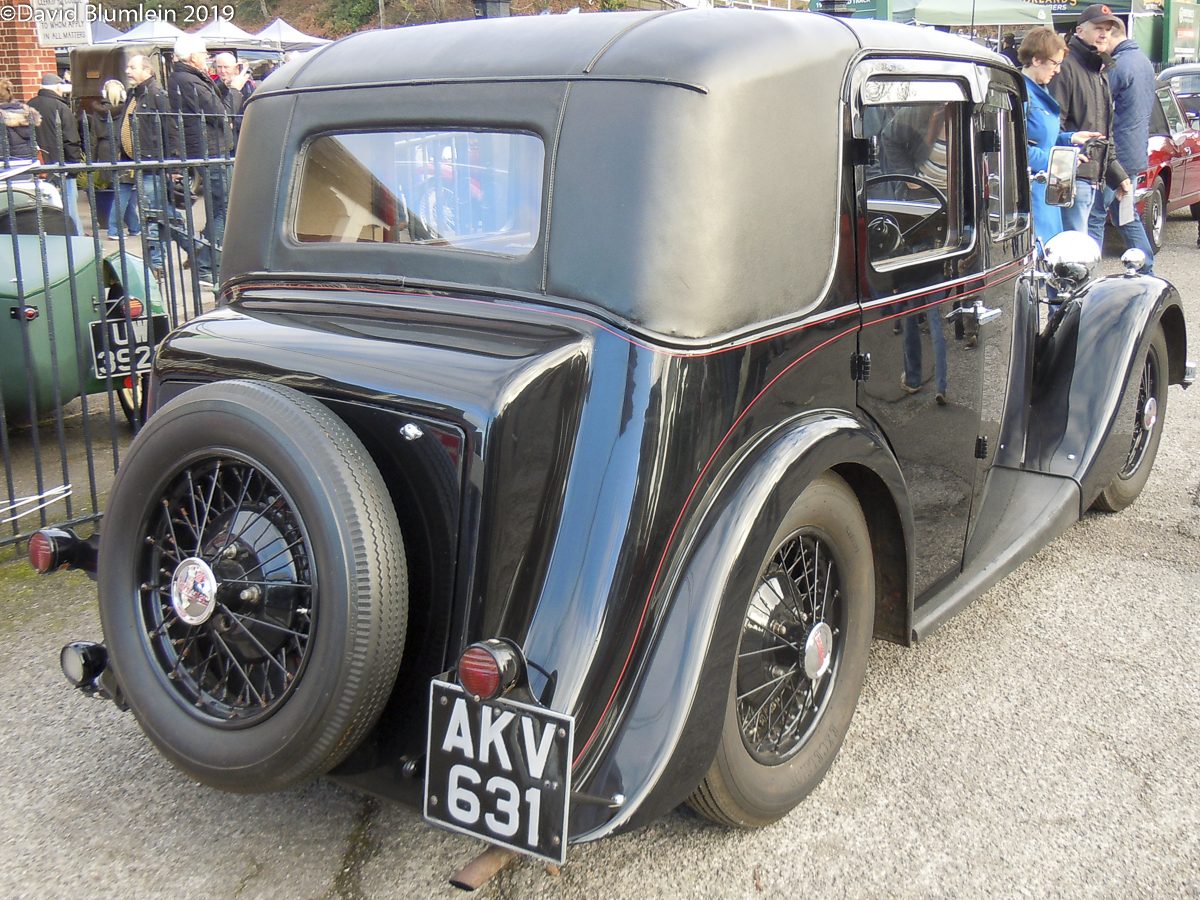












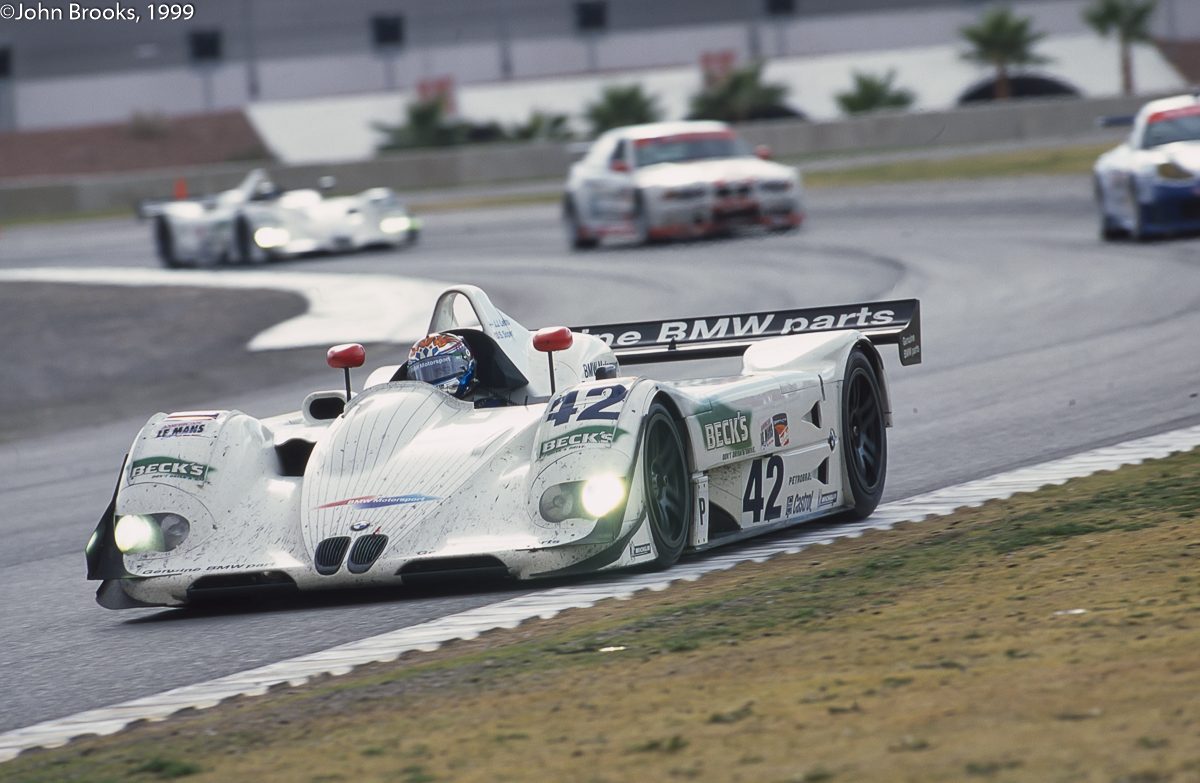
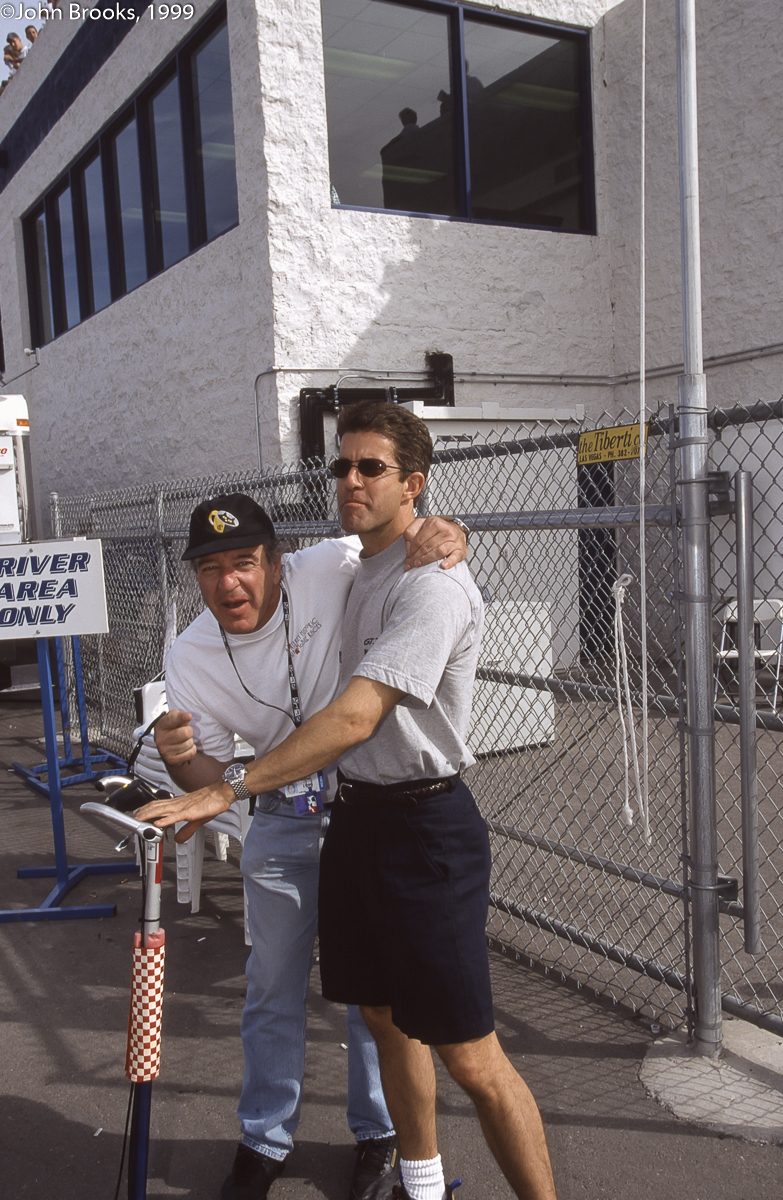







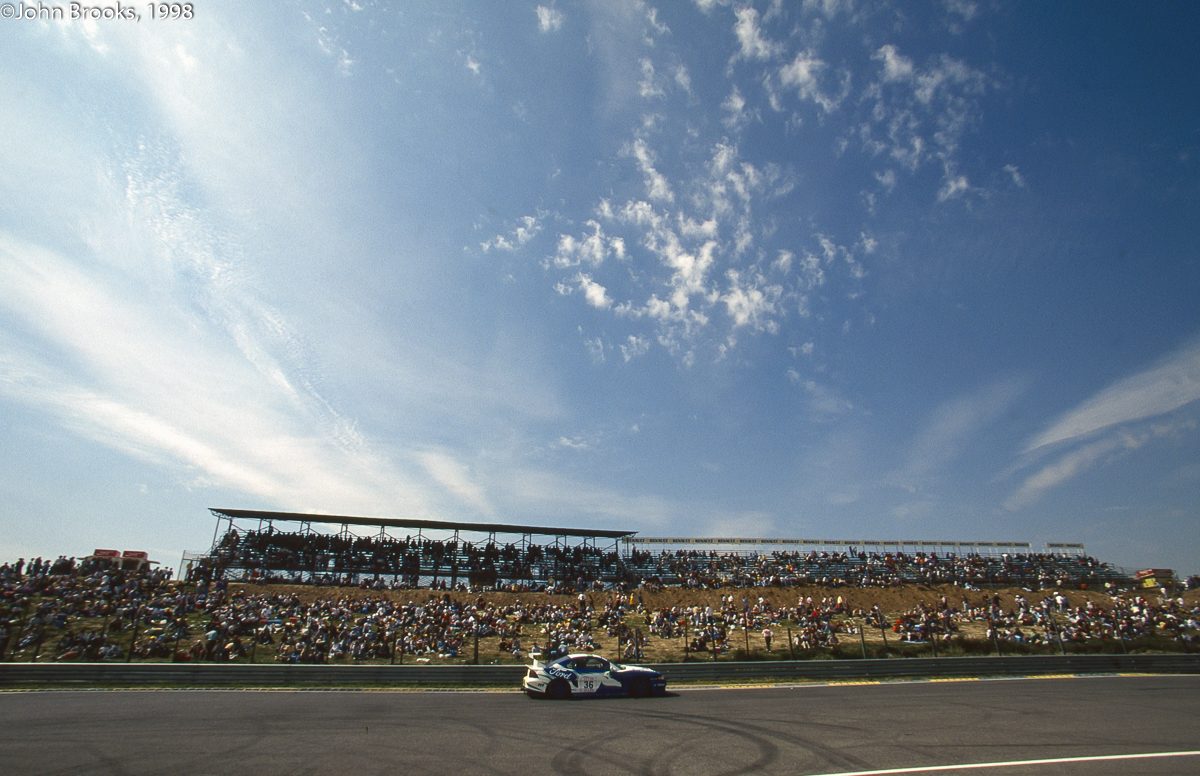















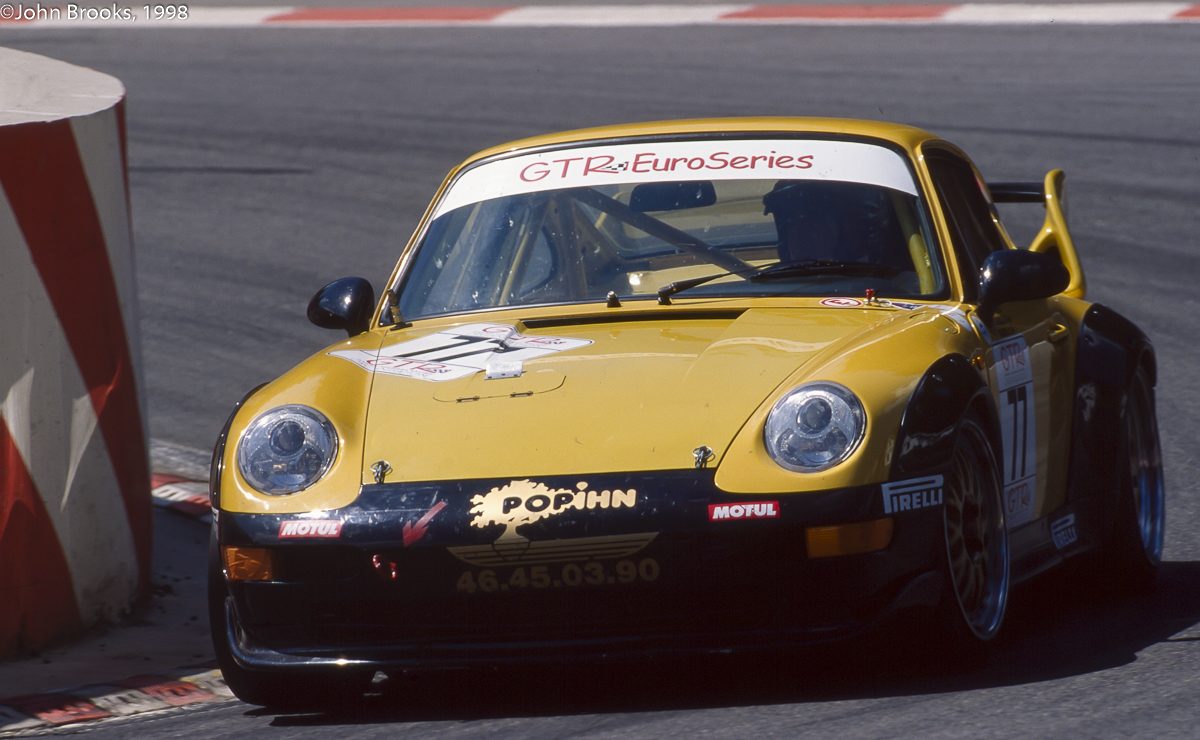



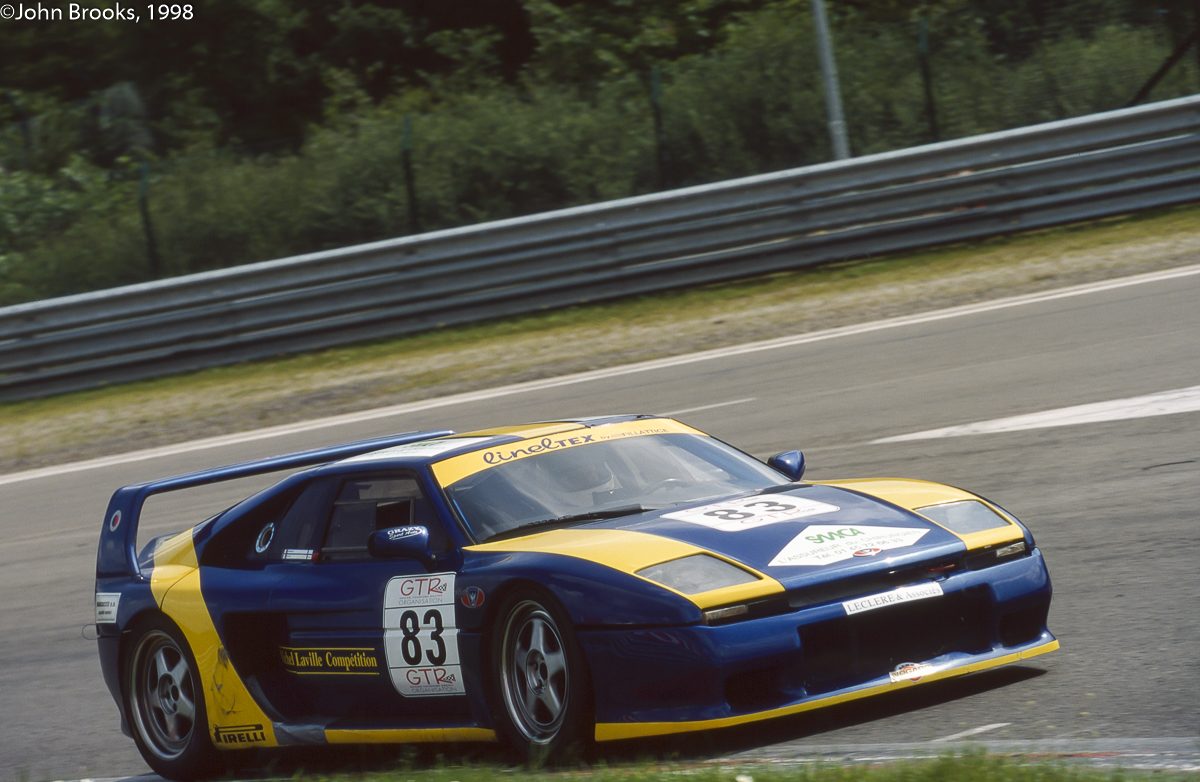




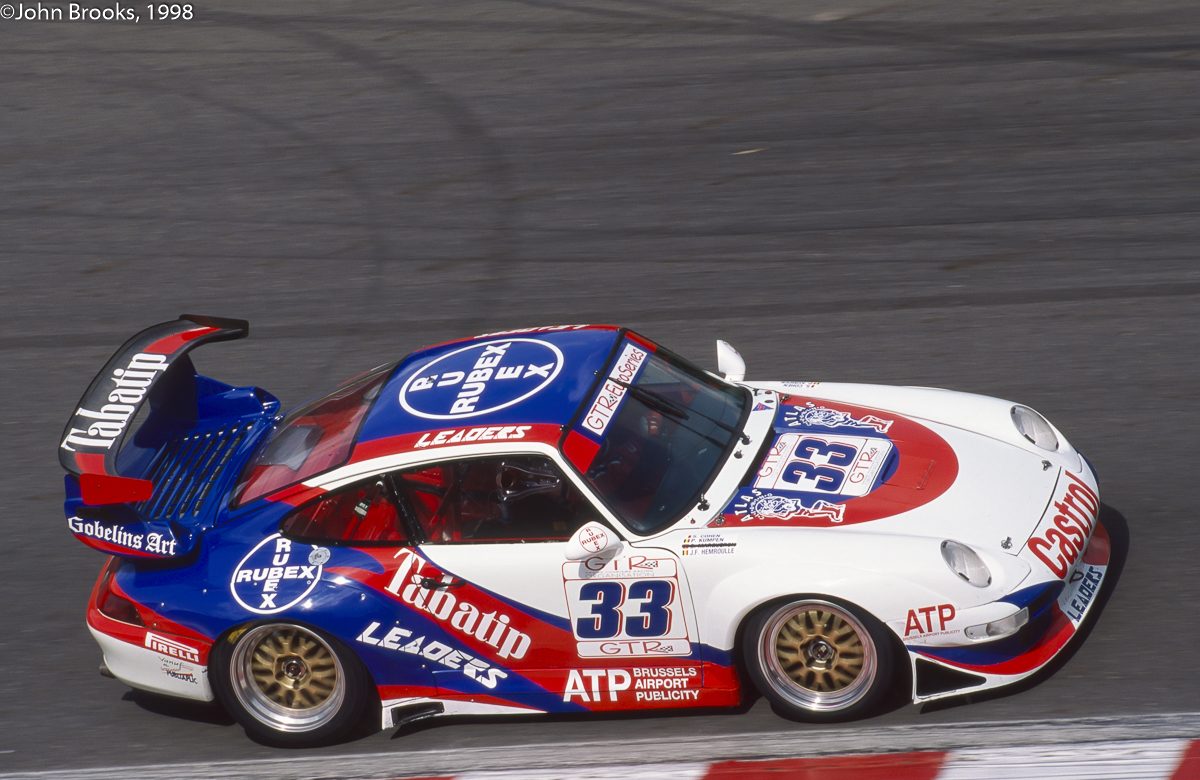

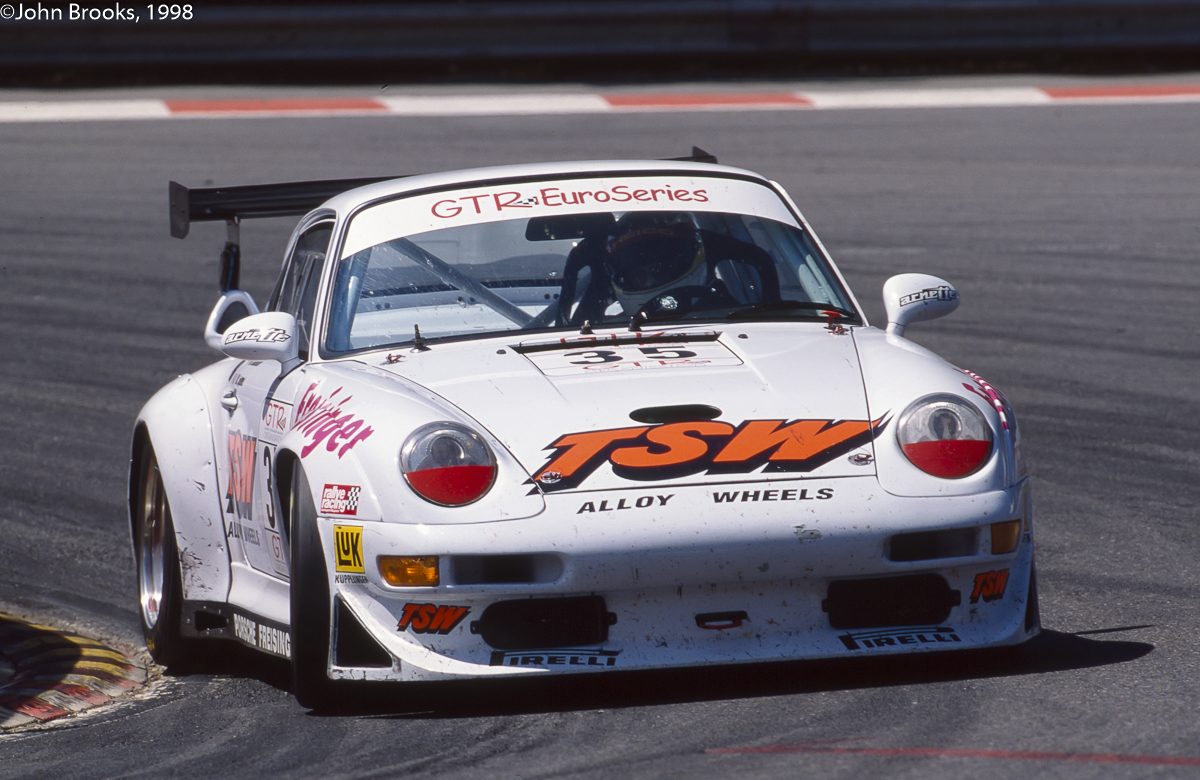



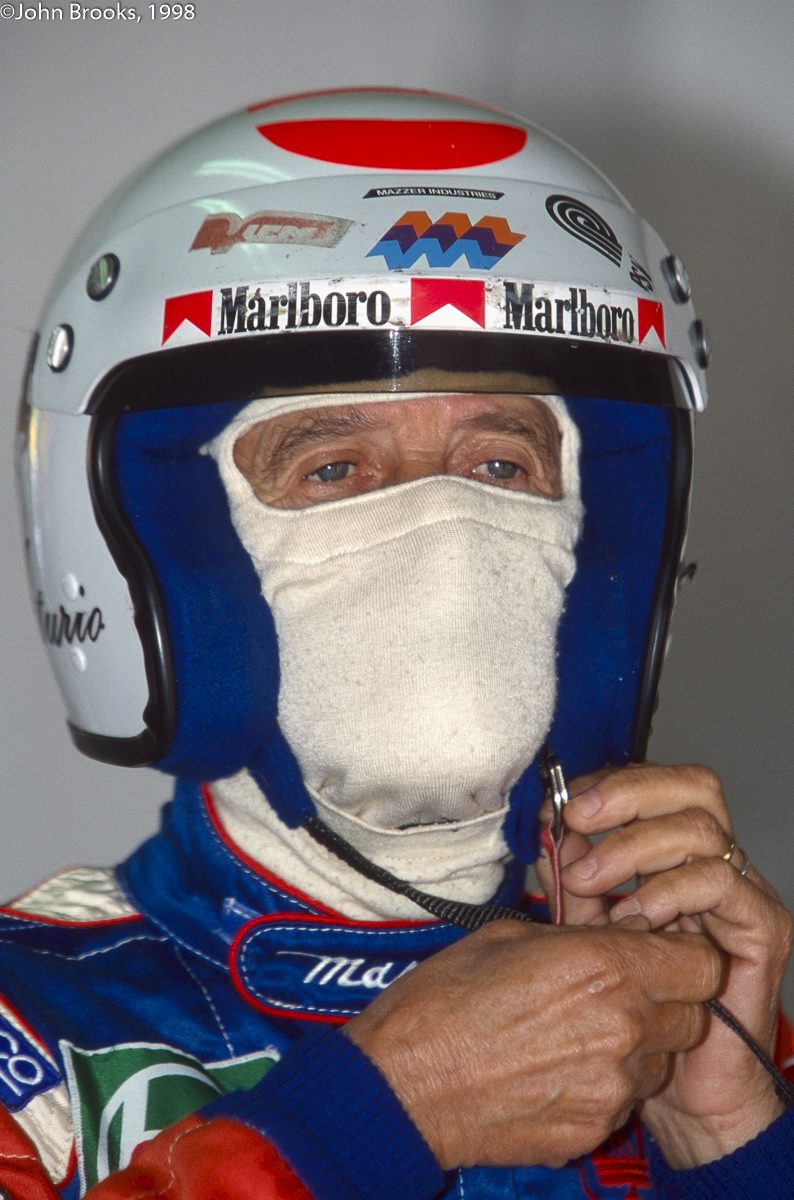











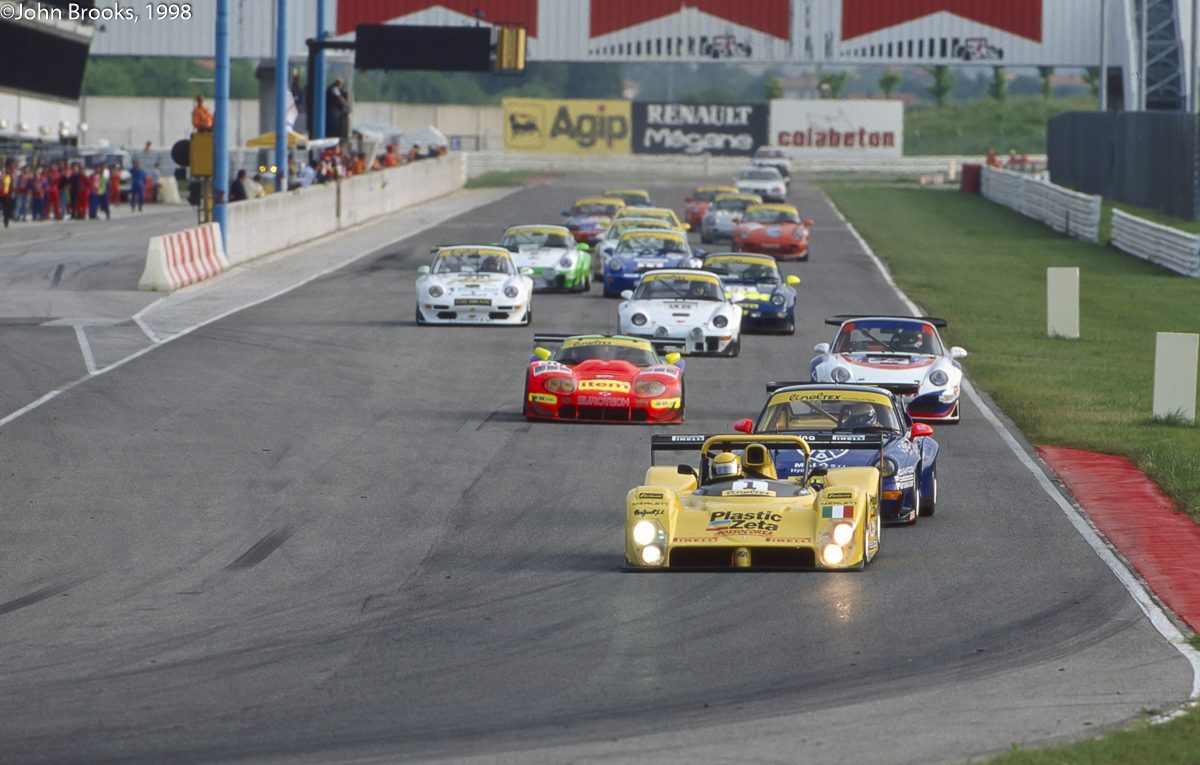
















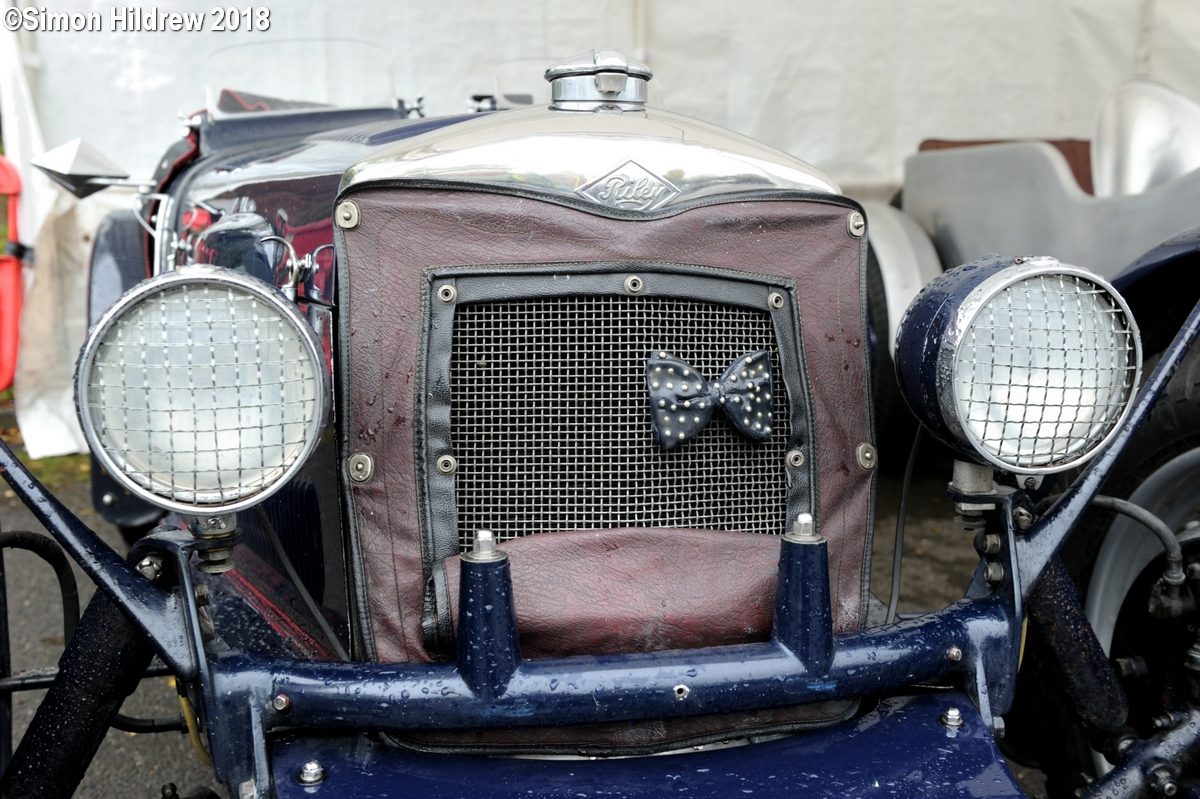














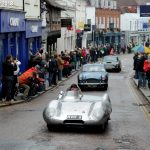














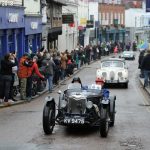



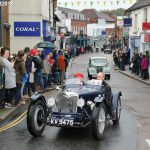








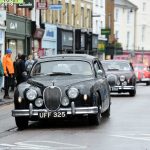

















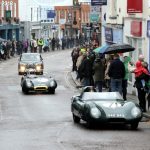



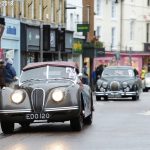

 Autumn or Fall as the locals would say is a very agreeable time to be in California’s Monterey Peninsula. This weekend the 2018 Intercontinental GT Challenge will reach its climax after a season of classic endurance GT races. SRO has history at the fantastic Laguna Seca track dating back to its earliest days.
Autumn or Fall as the locals would say is a very agreeable time to be in California’s Monterey Peninsula. This weekend the 2018 Intercontinental GT Challenge will reach its climax after a season of classic endurance GT races. SRO has history at the fantastic Laguna Seca track dating back to its earliest days.  Some 20 years ago the final round of the 1998 FIA GT Championship, was held at Laguna Seca. In the top GT1 class it was scheduled to be a classic encounter between the veteran champion, Klaus Ludwig and the bright star emerging to ascendancy, Bernd Schneider. Yes of course they had co-drivers, Ricardo Zonta and Mark Webber, but despite the obvious talent and potential of that pair all eyes were on the two Germans of different generations. Schneider had taken the title in 1997 and had looked favourite to repeat this for most of the 1998 season.
Some 20 years ago the final round of the 1998 FIA GT Championship, was held at Laguna Seca. In the top GT1 class it was scheduled to be a classic encounter between the veteran champion, Klaus Ludwig and the bright star emerging to ascendancy, Bernd Schneider. Yes of course they had co-drivers, Ricardo Zonta and Mark Webber, but despite the obvious talent and potential of that pair all eyes were on the two Germans of different generations. Schneider had taken the title in 1997 and had looked favourite to repeat this for most of the 1998 season. What added spice to the contest was that they were both driving for the AMG Mercedes team, for the majority of the season in the all-conquering Mercedes-Benz CLK-LM. Approaching the decisive race, the score sheet showed Ludwig and Zonta ahead of their rivals by four points, the margin between first and second place on track. However, Schneider and Webber had racked up five wins to four, so if the points tally was equal after Laguna Seca they would be champions on the basis of more race wins. It was a case of the winner takes it all and second place would be nowhere.
What added spice to the contest was that they were both driving for the AMG Mercedes team, for the majority of the season in the all-conquering Mercedes-Benz CLK-LM. Approaching the decisive race, the score sheet showed Ludwig and Zonta ahead of their rivals by four points, the margin between first and second place on track. However, Schneider and Webber had racked up five wins to four, so if the points tally was equal after Laguna Seca they would be champions on the basis of more race wins. It was a case of the winner takes it all and second place would be nowhere. The GT2 class was a complete contrast to this close contest in GT1. The Oreca Chrysler Viper team dominated proceedings, winning eight out of the nine rounds already run. Olivier Beretta and Pedro Lamy had grabbed the Drivers’ Title with seven victories, Monterey was expected to be more of the same. Could either the Roock Racing Porsches or Cor Euser’s Marcos challenge the Viper’s hegemony?
The GT2 class was a complete contrast to this close contest in GT1. The Oreca Chrysler Viper team dominated proceedings, winning eight out of the nine rounds already run. Olivier Beretta and Pedro Lamy had grabbed the Drivers’ Title with seven victories, Monterey was expected to be more of the same. Could either the Roock Racing Porsches or Cor Euser’s Marcos challenge the Viper’s hegemony?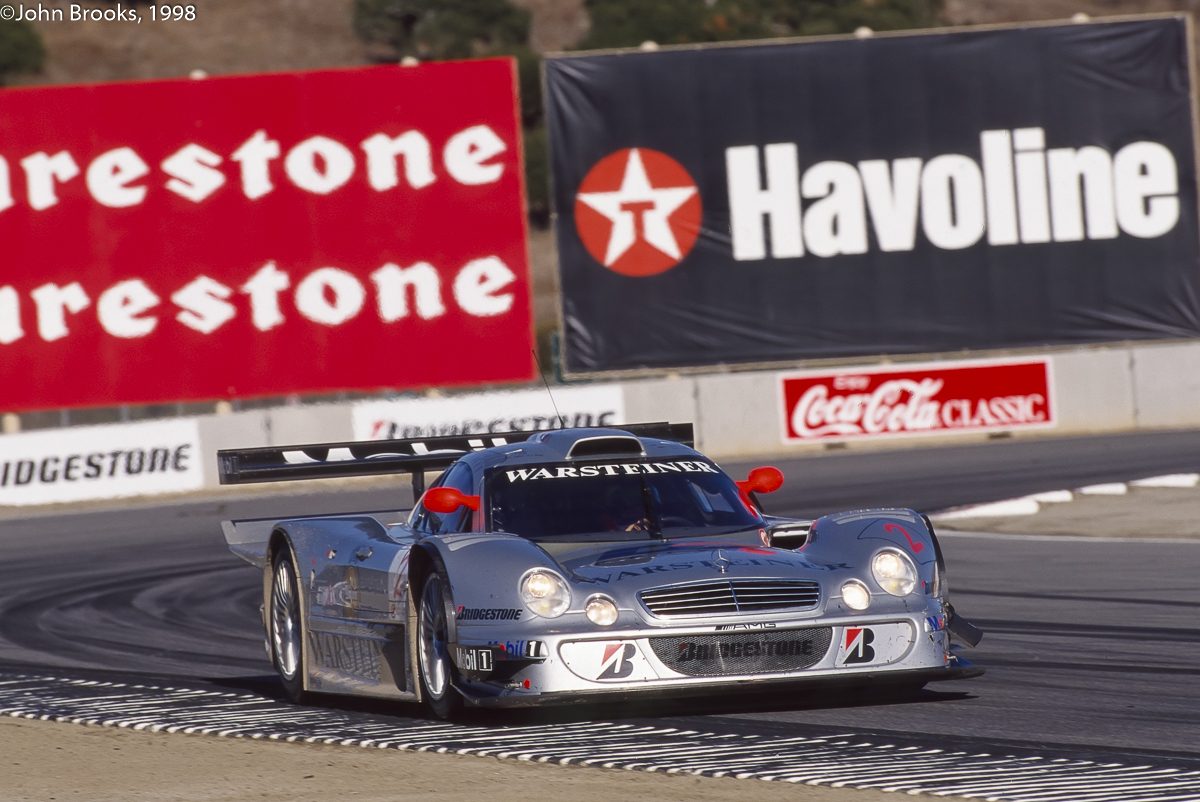 1998 was an almost perfect season for the AMG Mercedes squad. The only hiccup had come during the Le Mans 24 Hours when both cars went out early after suffering engine failure. A seal in the power-steering hydraulic pump failed and that trivial fault fatally damaged the engine. It was a most un-Mercedes moment as otherwise they were in a different league to their closest and only serious competitor, Porsche AG’s 911 GT1 98.
1998 was an almost perfect season for the AMG Mercedes squad. The only hiccup had come during the Le Mans 24 Hours when both cars went out early after suffering engine failure. A seal in the power-steering hydraulic pump failed and that trivial fault fatally damaged the engine. It was a most un-Mercedes moment as otherwise they were in a different league to their closest and only serious competitor, Porsche AG’s 911 GT1 98. In reality the Porsche was only a threat at certain kinds of circuits where the disadvantage of their turbocharged engines as regulated under the FIA GT1 rules package was not a factor. And even then, it was almost always Allan McNish who was able to challenge the Mercedes duo, we would grow accustomed to the electric pace of the Scot in the following decade, but it was something of an eye opener in 1998.
In reality the Porsche was only a threat at certain kinds of circuits where the disadvantage of their turbocharged engines as regulated under the FIA GT1 rules package was not a factor. And even then, it was almost always Allan McNish who was able to challenge the Mercedes duo, we would grow accustomed to the electric pace of the Scot in the following decade, but it was something of an eye opener in 1998. Adding even more spice to the contest was the announcement by Ludwig that he would retire from motor sport after the race in Monterey. His career had included three victories at Le Mans and five DTM titles, could he add the FIA GT Championship to the list? Klaus certainly was motivated, and said before the race, “Laguna Seca is one of the tracks I love the best. It’s a demanding track and an exciting track – the Corkscrew, in Europe, impossible! To win there would be very special for me.”
Adding even more spice to the contest was the announcement by Ludwig that he would retire from motor sport after the race in Monterey. His career had included three victories at Le Mans and five DTM titles, could he add the FIA GT Championship to the list? Klaus certainly was motivated, and said before the race, “Laguna Seca is one of the tracks I love the best. It’s a demanding track and an exciting track – the Corkscrew, in Europe, impossible! To win there would be very special for me.” 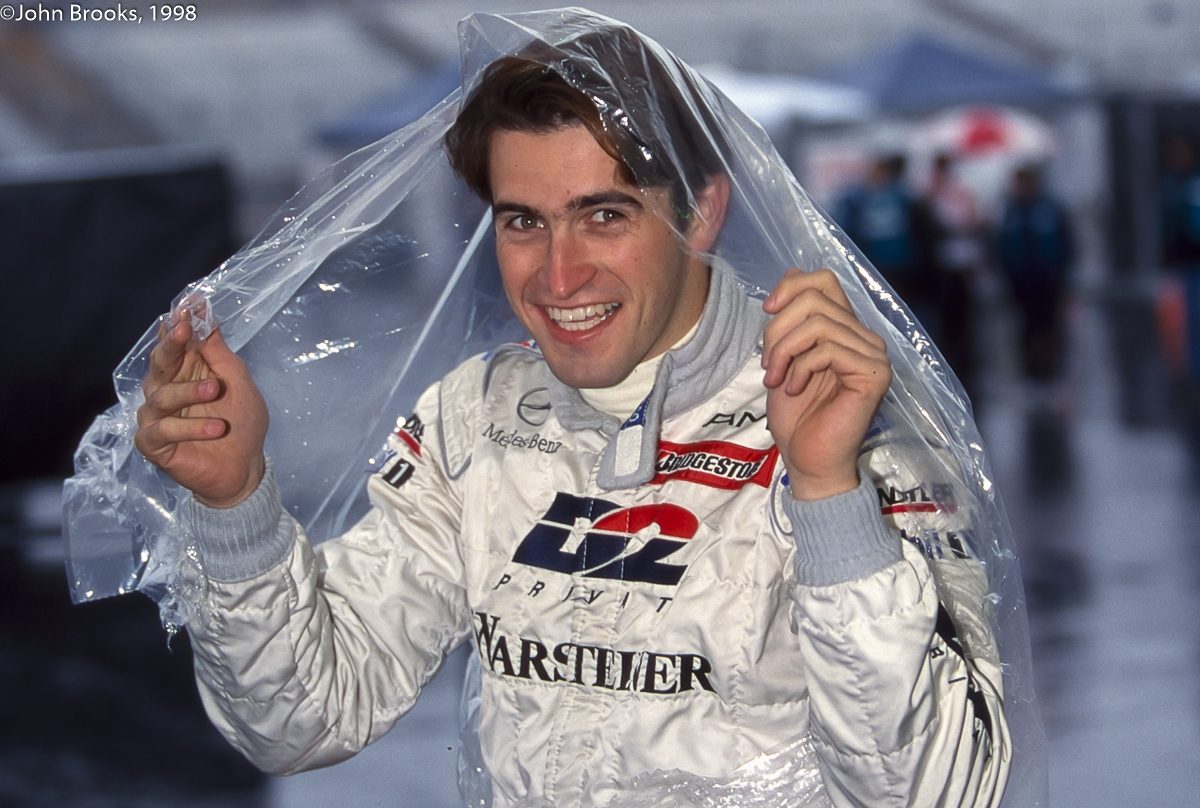 Ludwig was not the only one departing the GT scene, Ricardo Zonta was bound for Formula One, another Brazilian on the conveyor-belt of talent that started with Emmerson Fittipaldi and continued through Piquet, Senna, Barrichello and Massa amongst many others.
Ludwig was not the only one departing the GT scene, Ricardo Zonta was bound for Formula One, another Brazilian on the conveyor-belt of talent that started with Emmerson Fittipaldi and continued through Piquet, Senna, Barrichello and Massa amongst many others. However, there was still a Championship to be decided. Most Europeans like myself imagine that California is a place of sunshine and beaches, blondes and brunettes of either sex, all tanned, forever young. So, it was something of a shock arriving at the track in anticipation of Saturday Morning’s Qualifying session to conditions usually found at the Nürburgring or Spa, torrential rain. The first session was stopped after 15 minutes as a river of mud was blocking the Corkscrew, not quite how I imagined the weather would be on the West Coast.
However, there was still a Championship to be decided. Most Europeans like myself imagine that California is a place of sunshine and beaches, blondes and brunettes of either sex, all tanned, forever young. So, it was something of a shock arriving at the track in anticipation of Saturday Morning’s Qualifying session to conditions usually found at the Nürburgring or Spa, torrential rain. The first session was stopped after 15 minutes as a river of mud was blocking the Corkscrew, not quite how I imagined the weather would be on the West Coast. The afternoon’s conditions were much better and the advantage swung Ludwig’s way courtesy of Zonta. The Brazilian’s pole position lap of 1m16.154s was 0.434 seconds faster than Schneider’s best. Afterwards Ricardo explained. “My qualifying lap was really good but not without a problem. Because I experienced a little brake balance problem, I got off-line in the last corner where it was a little wet. That might have cost me some time.”
The afternoon’s conditions were much better and the advantage swung Ludwig’s way courtesy of Zonta. The Brazilian’s pole position lap of 1m16.154s was 0.434 seconds faster than Schneider’s best. Afterwards Ricardo explained. “My qualifying lap was really good but not without a problem. Because I experienced a little brake balance problem, I got off-line in the last corner where it was a little wet. That might have cost me some time.” In GT2 the Viper effort was reduced to one car after David Donohue crashed out on Friday. He hit the wall hard as a result of brake failure, the car caught fire and was too badly damaged for any immediate repair.
In GT2 the Viper effort was reduced to one car after David Donohue crashed out on Friday. He hit the wall hard as a result of brake failure, the car caught fire and was too badly damaged for any immediate repair. Class Pole was grabbed by a very determined Stéphane Ortelli in his Roock Racing Porsche 911 GT2 with a 1:24.851 lap, less than a tenth of second advantage over Cor Euser’s Marcos LM 600 who was fractions faster than Beretta’s Viper. This could be a race to match the GT1 battle, or so we hoped.
Class Pole was grabbed by a very determined Stéphane Ortelli in his Roock Racing Porsche 911 GT2 with a 1:24.851 lap, less than a tenth of second advantage over Cor Euser’s Marcos LM 600 who was fractions faster than Beretta’s Viper. This could be a race to match the GT1 battle, or so we hoped. After the traditional end-of-term drivers’ photo Klaus was presented with a lump of the track as a memento of his final race, it seemed a very Californian thing to do.
After the traditional end-of-term drivers’ photo Klaus was presented with a lump of the track as a memento of his final race, it seemed a very Californian thing to do. AMG Mercedes had the front row to themselves, who would emerge from Turn One in the lead, Schneider or Ludwig? Everyone held their breath but in the end the veteran got the best start and quickly pulled away from his rival.
AMG Mercedes had the front row to themselves, who would emerge from Turn One in the lead, Schneider or Ludwig? Everyone held their breath but in the end the veteran got the best start and quickly pulled away from his rival. In any case Bernd had his mirrors full of a Porsche with McNish making a nuisance of himself, even passing the Mercedes after a few laps.
In any case Bernd had his mirrors full of a Porsche with McNish making a nuisance of himself, even passing the Mercedes after a few laps. GT2 also saw a fierce tussle for the lead in opening laps before the natural order of things asserted itself with Beretta grabbing the lead. Two of the major challengers to the all-conquering Viper both retired with gearbox failure after just seven laps, that was the end of Jan Lammers in the Konrad Porsche and also Claudia Hürtgen in the 911 she shared with Ortelli. A few laps later and the Marcos was out. Also with transmission woes.
GT2 also saw a fierce tussle for the lead in opening laps before the natural order of things asserted itself with Beretta grabbing the lead. Two of the major challengers to the all-conquering Viper both retired with gearbox failure after just seven laps, that was the end of Jan Lammers in the Konrad Porsche and also Claudia Hürtgen in the 911 she shared with Ortelli. A few laps later and the Marcos was out. Also with transmission woes. Ludwig had his own dramas to contend with while negotiating his way through the traffic. William Langhorne in the Stadler GT2 Porsche was having a spirited contest with Michel Neugarten in his Elf Haberthur example, swapping positions round the sweeping track. The American was fully concentrating on the car in front so did not see Ludwig dive underneath him at Turn Three. The result was a heavy side impact that nearly put Klaus off the tarmac but somehow, he gathered himself together and raced on at full speed. Langhorne crashed out the following lap at the Corkscrew, something broke he maintained.
Ludwig had his own dramas to contend with while negotiating his way through the traffic. William Langhorne in the Stadler GT2 Porsche was having a spirited contest with Michel Neugarten in his Elf Haberthur example, swapping positions round the sweeping track. The American was fully concentrating on the car in front so did not see Ludwig dive underneath him at Turn Three. The result was a heavy side impact that nearly put Klaus off the tarmac but somehow, he gathered himself together and raced on at full speed. Langhorne crashed out the following lap at the Corkscrew, something broke he maintained. Schneider also got rid of the McNish problem around this point, the clutch failed on the Porsche stranding the Scot out on the far side of the circuit. It would be a straight fight for victory for the #1 and #2 Mercedes. Schneider then dived into the pits, fuel only, no fresh Bridgestones.
Schneider also got rid of the McNish problem around this point, the clutch failed on the Porsche stranding the Scot out on the far side of the circuit. It would be a straight fight for victory for the #1 and #2 Mercedes. Schneider then dived into the pits, fuel only, no fresh Bridgestones. A lap later Ludwig was in, then out of the car, Zonta taking new rubber. He managed to stall the CLK-LM as he left the pits, all of which gave a handy advantage back to Schneider.
A lap later Ludwig was in, then out of the car, Zonta taking new rubber. He managed to stall the CLK-LM as he left the pits, all of which gave a handy advantage back to Schneider. Bernd was looking certain to take the title but then lost a load of time stuck behind Jörg Müller in the other factory Porsche 911 GT1 98. Müller was determined to not go a lap down on the leader, hoping that the deployment of a Safety Car would give him the chance to catch up to the front. Eventually Müller ran wide at the first turn, allowing Schneider to pass, though he was furious at his fellow German. The gap was around the 12 second mark but this might not be enough to guarantee victory.
Bernd was looking certain to take the title but then lost a load of time stuck behind Jörg Müller in the other factory Porsche 911 GT1 98. Müller was determined to not go a lap down on the leader, hoping that the deployment of a Safety Car would give him the chance to catch up to the front. Eventually Müller ran wide at the first turn, allowing Schneider to pass, though he was furious at his fellow German. The gap was around the 12 second mark but this might not be enough to guarantee victory. The second stints ended and into the pits came Schneider to hand over to his Aussie co-driver who also received a new set of tyres. This would put Webber behind Zonta on the road as it was expected that his stop would be a fuel only affair and so it proved. The AMG Mercedes management had anxious moments after both of their cars left the pits for the final time. Both fell off the track at Turn Three where oil had been deposited by a back marker, both cars just missed hitting the wall by a fraction, it could have been a disaster.
The second stints ended and into the pits came Schneider to hand over to his Aussie co-driver who also received a new set of tyres. This would put Webber behind Zonta on the road as it was expected that his stop would be a fuel only affair and so it proved. The AMG Mercedes management had anxious moments after both of their cars left the pits for the final time. Both fell off the track at Turn Three where oil had been deposited by a back marker, both cars just missed hitting the wall by a fraction, it could have been a disaster. Zonta had a lead of 16 seconds but Webber got his head down and chipped away taking a second here, a second there. The #8 Porsche intervened again, this time it was Uwe Alzen’s turn to hold up the #1 Mercedes for a lap or two. Eventually Weber dived down the inside at the first turn and once again the was contact as the Porsche was muscled out of the way but he was through and the chase was back on.
Zonta had a lead of 16 seconds but Webber got his head down and chipped away taking a second here, a second there. The #8 Porsche intervened again, this time it was Uwe Alzen’s turn to hold up the #1 Mercedes for a lap or two. Eventually Weber dived down the inside at the first turn and once again the was contact as the Porsche was muscled out of the way but he was through and the chase was back on. Webber posted a time of 1:19.094, setting a new GT record, would it be enough? The gap came down to ten seconds but the time ran out for the chasing Mercedes and Zonta crossed the line 10.8 seconds ahead – Ludwig and Zonta were Champions, the fairy tale had come true.
Webber posted a time of 1:19.094, setting a new GT record, would it be enough? The gap came down to ten seconds but the time ran out for the chasing Mercedes and Zonta crossed the line 10.8 seconds ahead – Ludwig and Zonta were Champions, the fairy tale had come true. There was no fairy tale in GT2, in fact the whole affair was something of a damp squib. The race was a walk over for Beretta and Lamy, who scored their eight class win of the season, ending up over a lap in front of the second Roock Racing 911 GT2, driven by Bruno Eichmann and Mike Hezemans. The final spot on the podium want to another 911 GT2, driven by Michael Trunk and Bernhard Müller.
There was no fairy tale in GT2, in fact the whole affair was something of a damp squib. The race was a walk over for Beretta and Lamy, who scored their eight class win of the season, ending up over a lap in front of the second Roock Racing 911 GT2, driven by Bruno Eichmann and Mike Hezemans. The final spot on the podium want to another 911 GT2, driven by Michael Trunk and Bernhard Müller.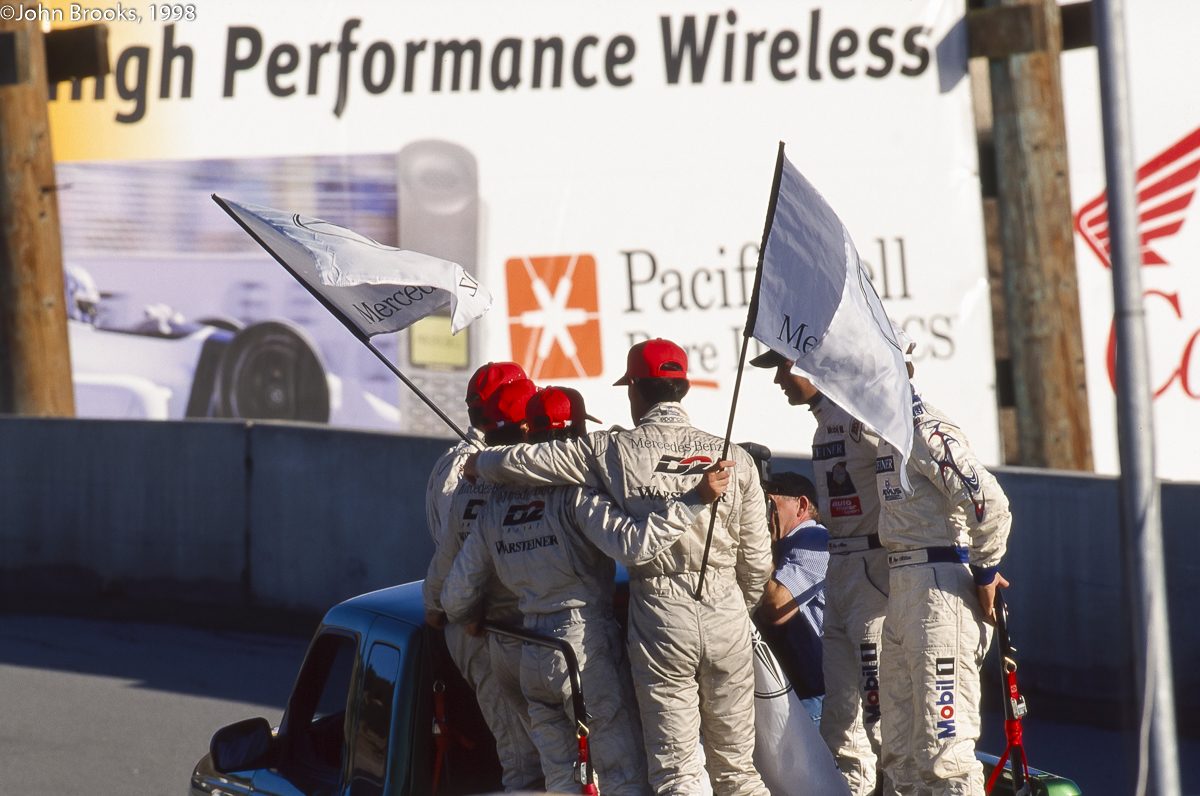 Schneider showed grace in defeat, he is, and always was, a class act. “Failing to win the title after 10 races by just 10 seconds shows how tough we raced for the Drivers’ Championship this season. Although Mark and I didn’t manage to win the Championship, I’m glad for the team. Congratulations to my old friend Klaus, who deserves to end his career as Champion.”
Schneider showed grace in defeat, he is, and always was, a class act. “Failing to win the title after 10 races by just 10 seconds shows how tough we raced for the Drivers’ Championship this season. Although Mark and I didn’t manage to win the Championship, I’m glad for the team. Congratulations to my old friend Klaus, who deserves to end his career as Champion.” Mark later reflected on the result in his excellent autobiography ‘Aussie Grit’. “So, the end result was second place in the FIA GT Championship by a margin of eight points. My disappointment was tempered by happiness for Klaus, since that was his last year in racing, but I also felt it had been a little unfair on Bernd. His partner came from Formula Ford and F3, whereas Ricardo arrived as the new F3000 champion to partner Klaus and was already getting test drives in Formula 1. I could go toe-to-toe with them most times but sometimes I struggled, partly because it was Bernd’s car, basically, and he had it set up as he wanted it, and partly through sheer lack of experience.”
Mark later reflected on the result in his excellent autobiography ‘Aussie Grit’. “So, the end result was second place in the FIA GT Championship by a margin of eight points. My disappointment was tempered by happiness for Klaus, since that was his last year in racing, but I also felt it had been a little unfair on Bernd. His partner came from Formula Ford and F3, whereas Ricardo arrived as the new F3000 champion to partner Klaus and was already getting test drives in Formula 1. I could go toe-to-toe with them most times but sometimes I struggled, partly because it was Bernd’s car, basically, and he had it set up as he wanted it, and partly through sheer lack of experience.”  Zonta had this to say after the race. “This was a real tough title fight. I had to give it my all to keep the gap to Mark Webber wide enough to make it. The fact that we both went off because of oil on the track shows how close to the limit we were. I’m really happy about the title and that I could win it together with Klaus.”
Zonta had this to say after the race. “This was a real tough title fight. I had to give it my all to keep the gap to Mark Webber wide enough to make it. The fact that we both went off because of oil on the track shows how close to the limit we were. I’m really happy about the title and that I could win it together with Klaus.” The retiring Champion had the last word. “I’m extremely happy about the Championship. This was a sensational achievement by the team, and my co-driver Ricardo is the best I could have asked for. I want to thank especially Norbert Haug and Hans Werner Aufrecht, who brought me back to AMG Mercedes.”
The retiring Champion had the last word. “I’m extremely happy about the Championship. This was a sensational achievement by the team, and my co-driver Ricardo is the best I could have asked for. I want to thank especially Norbert Haug and Hans Werner Aufrecht, who brought me back to AMG Mercedes.”

